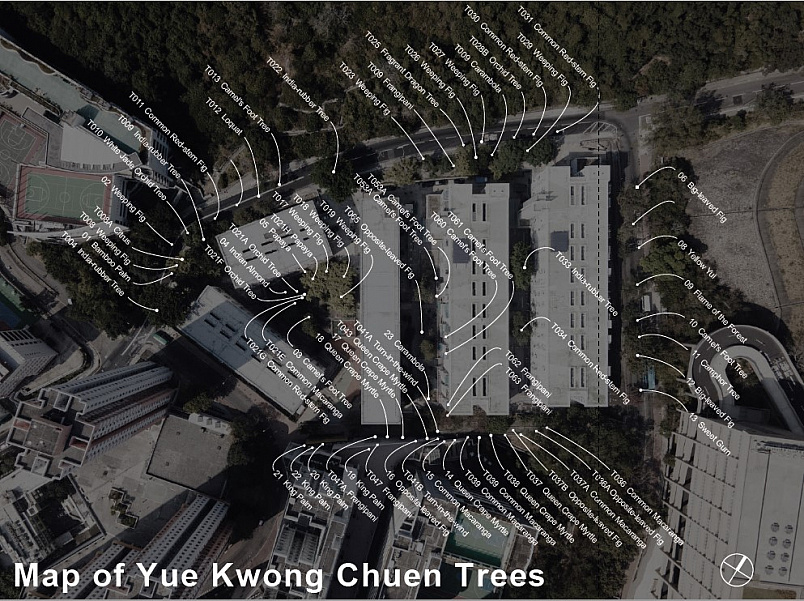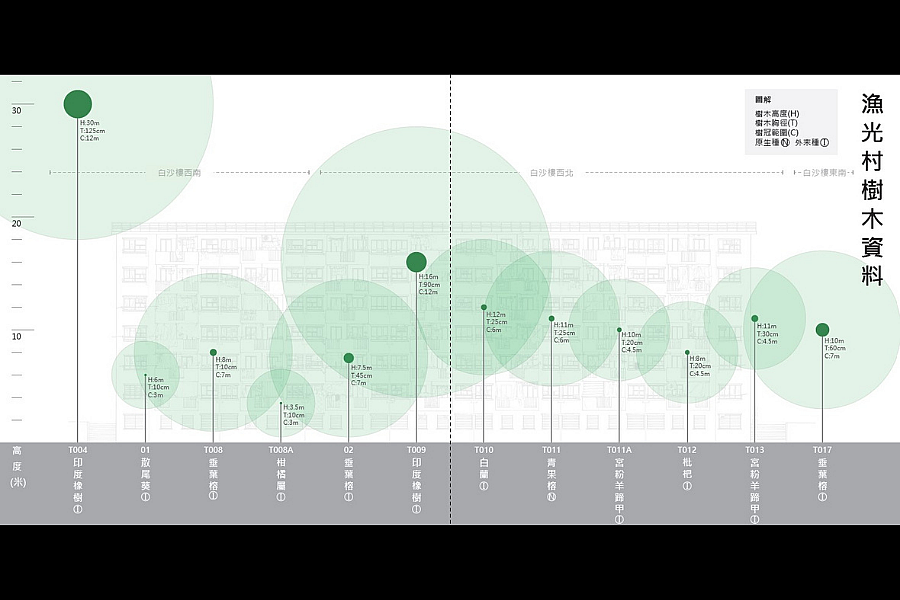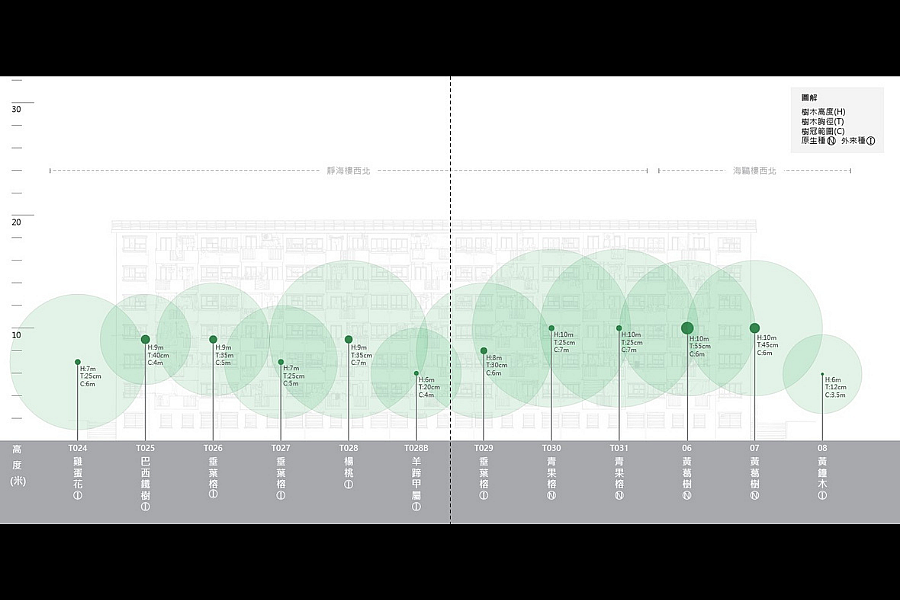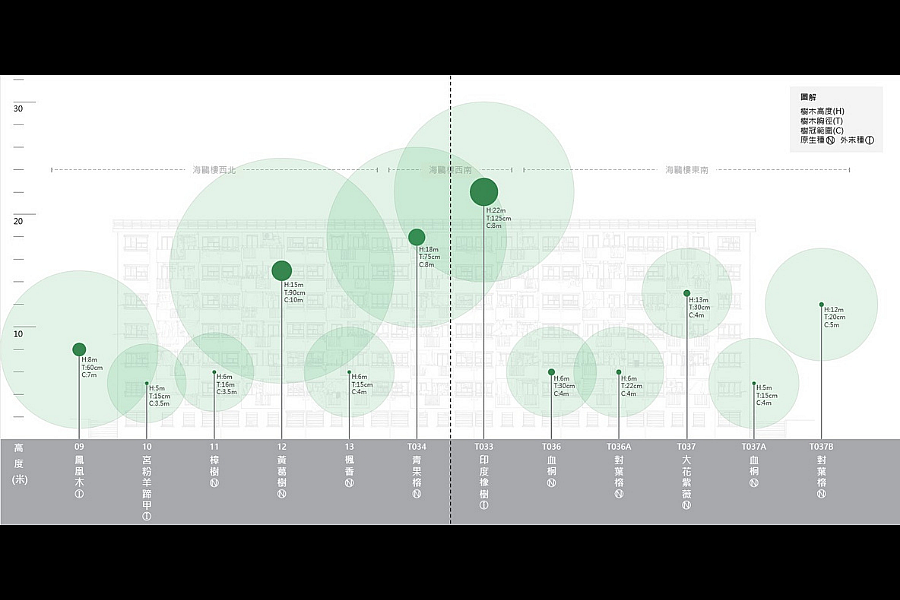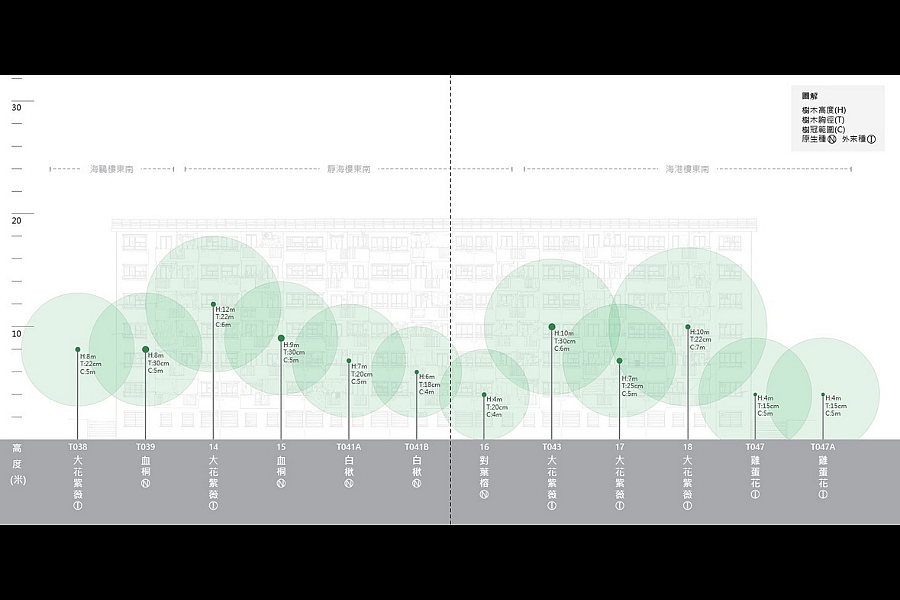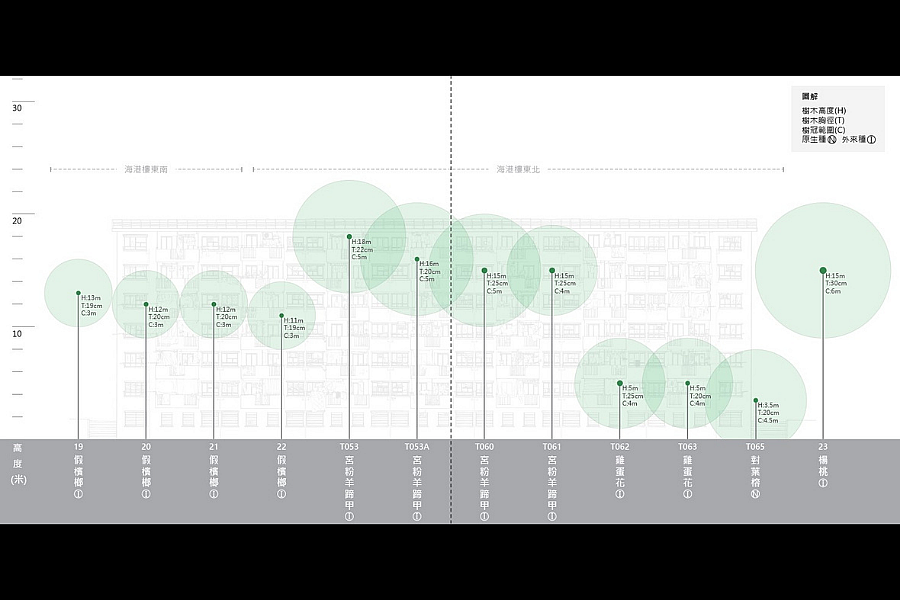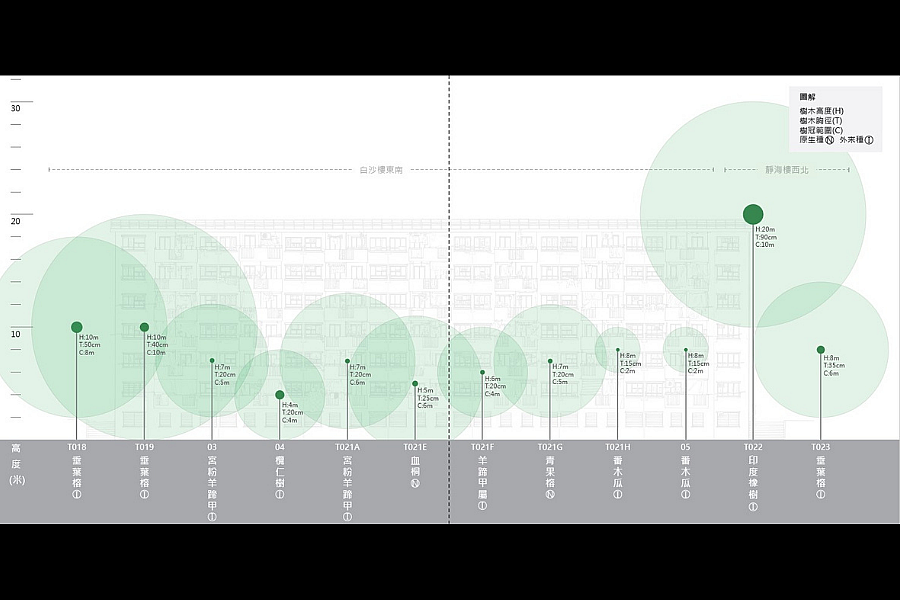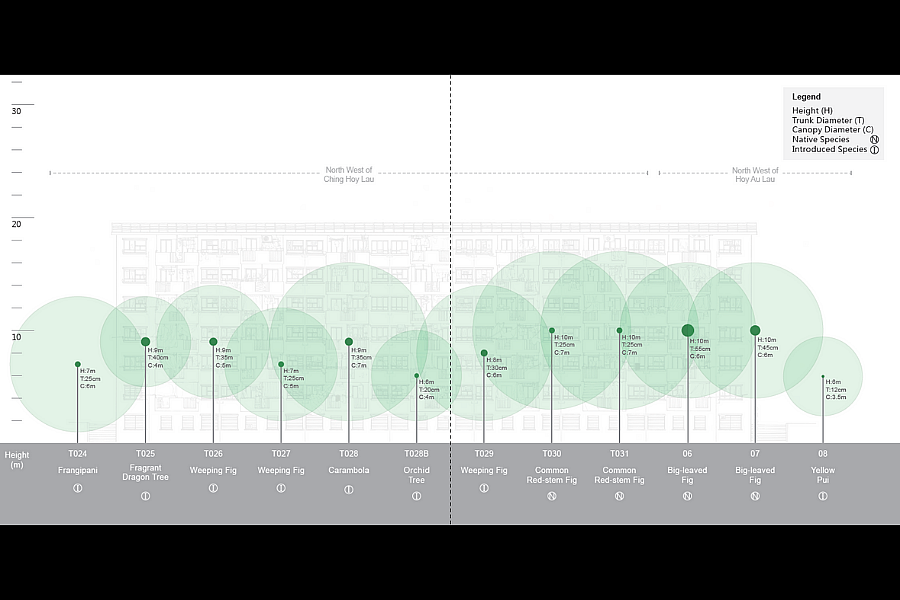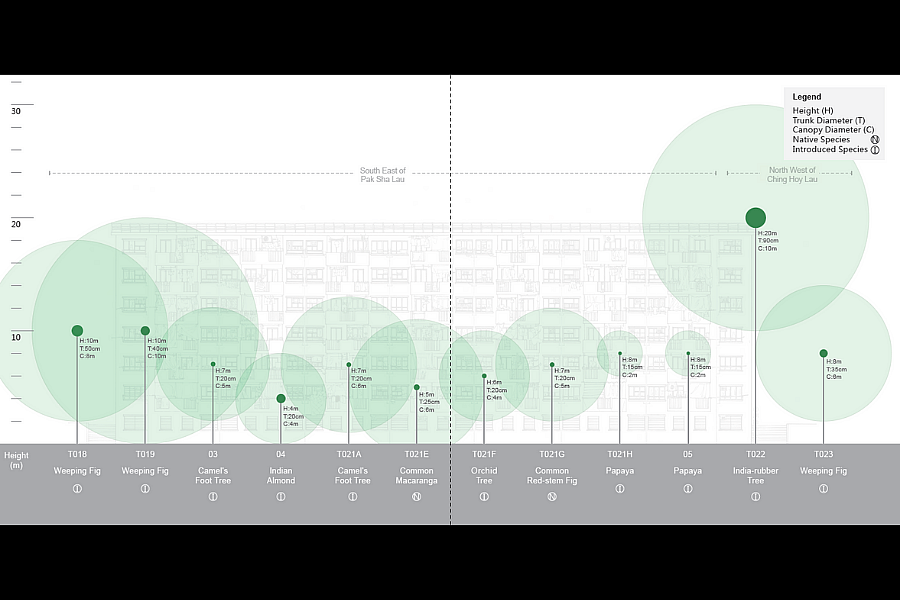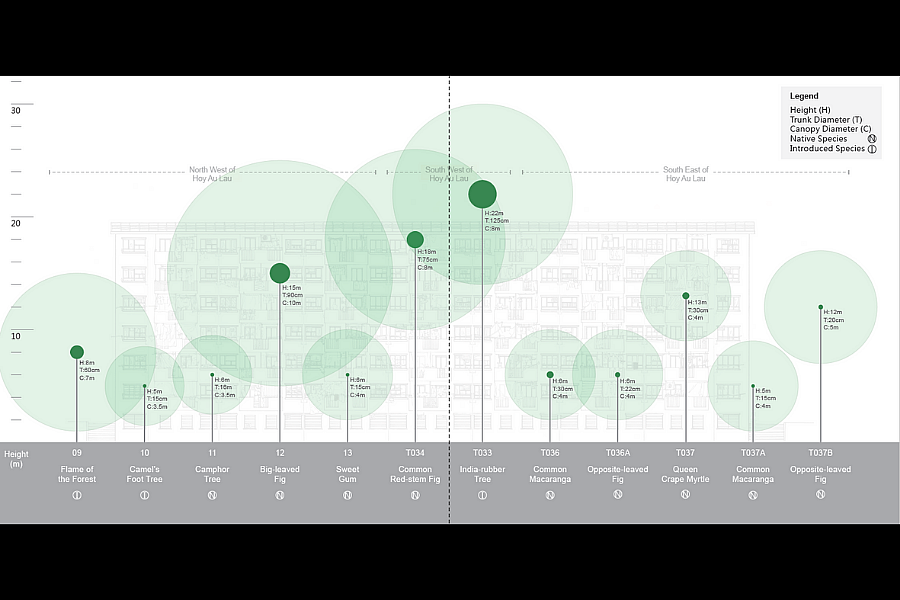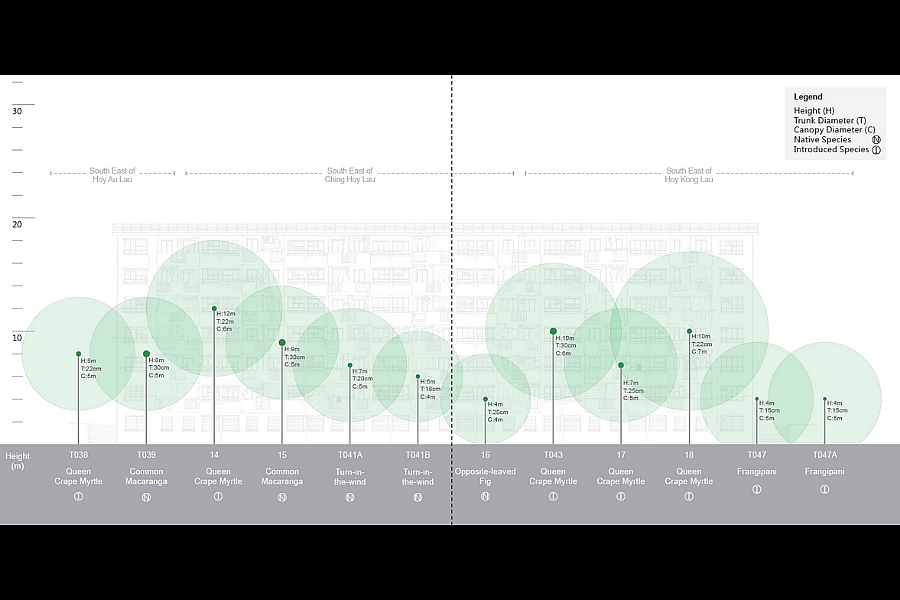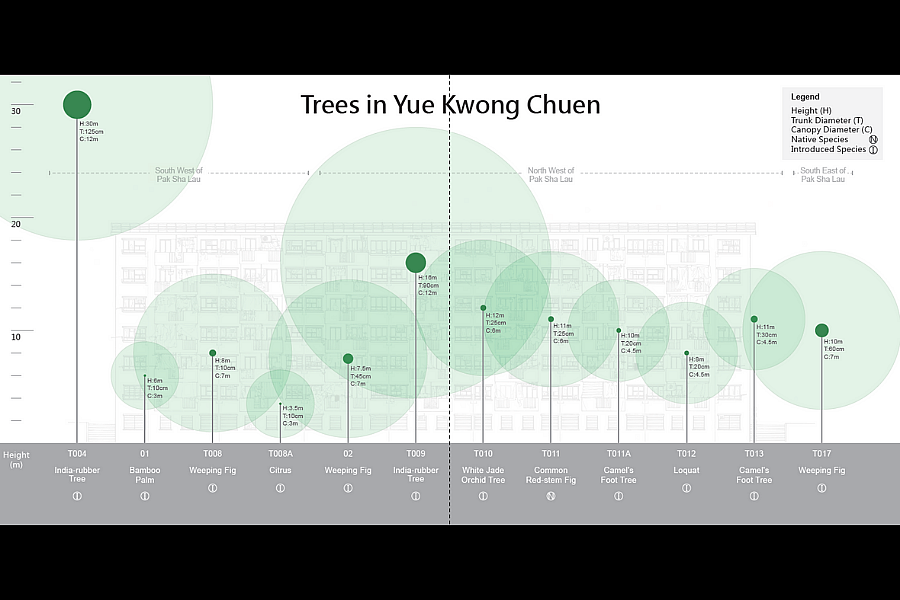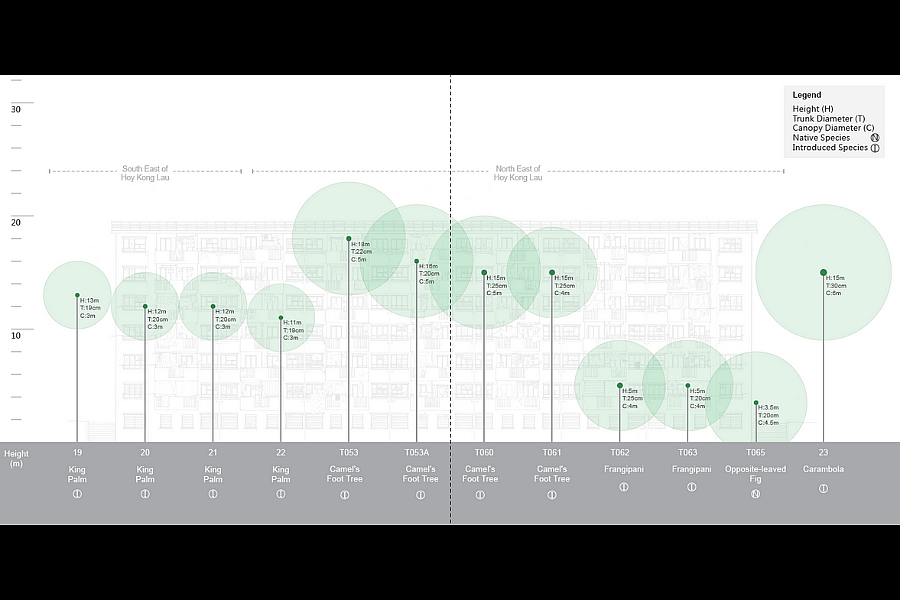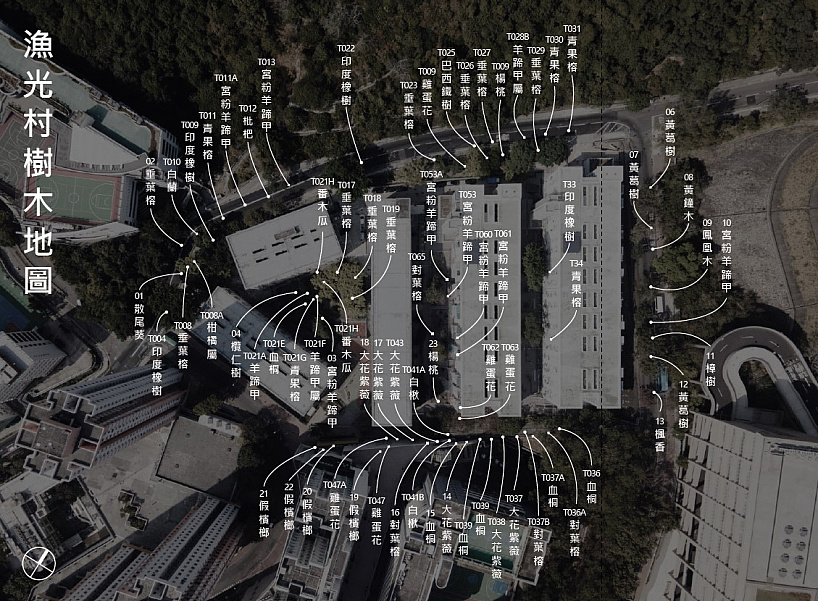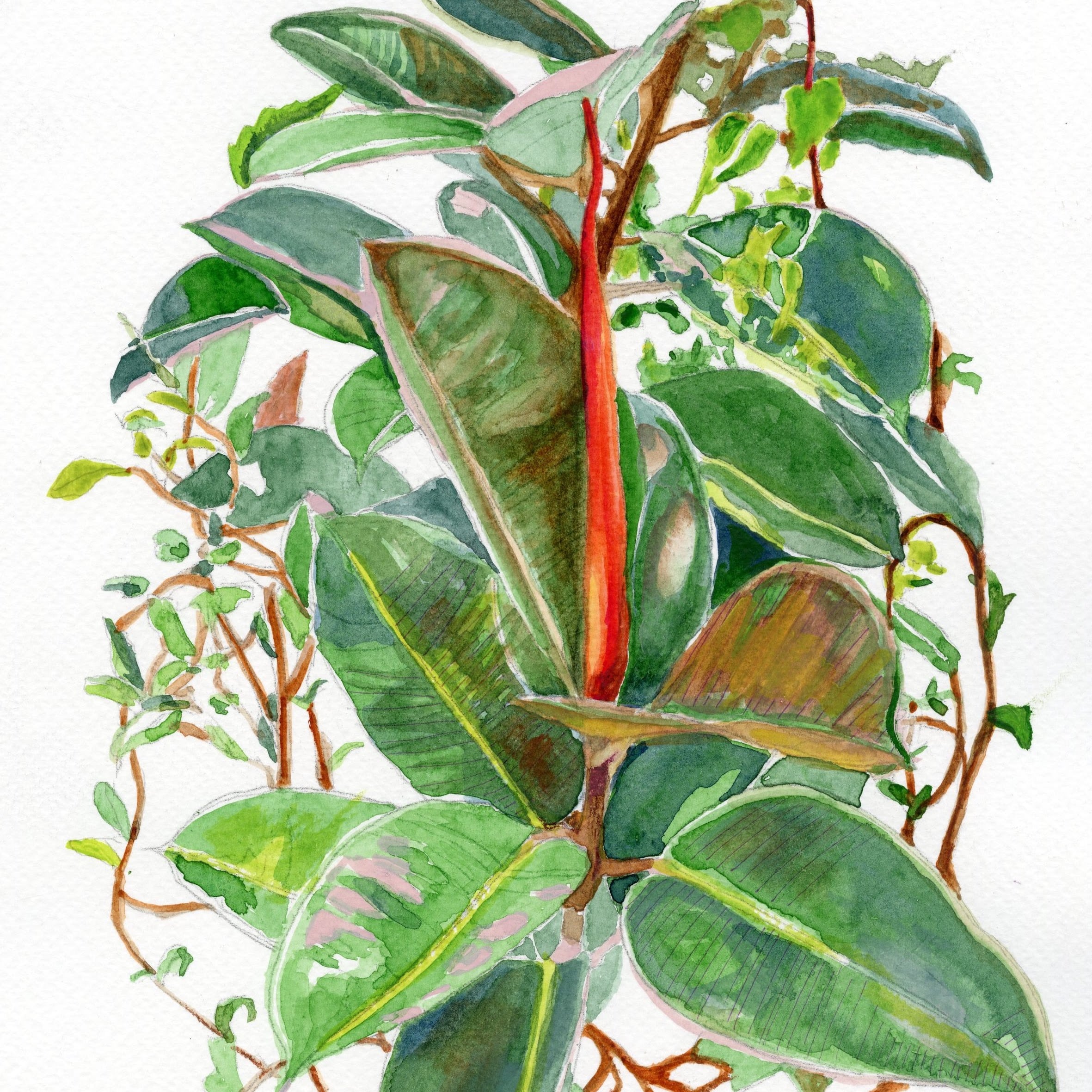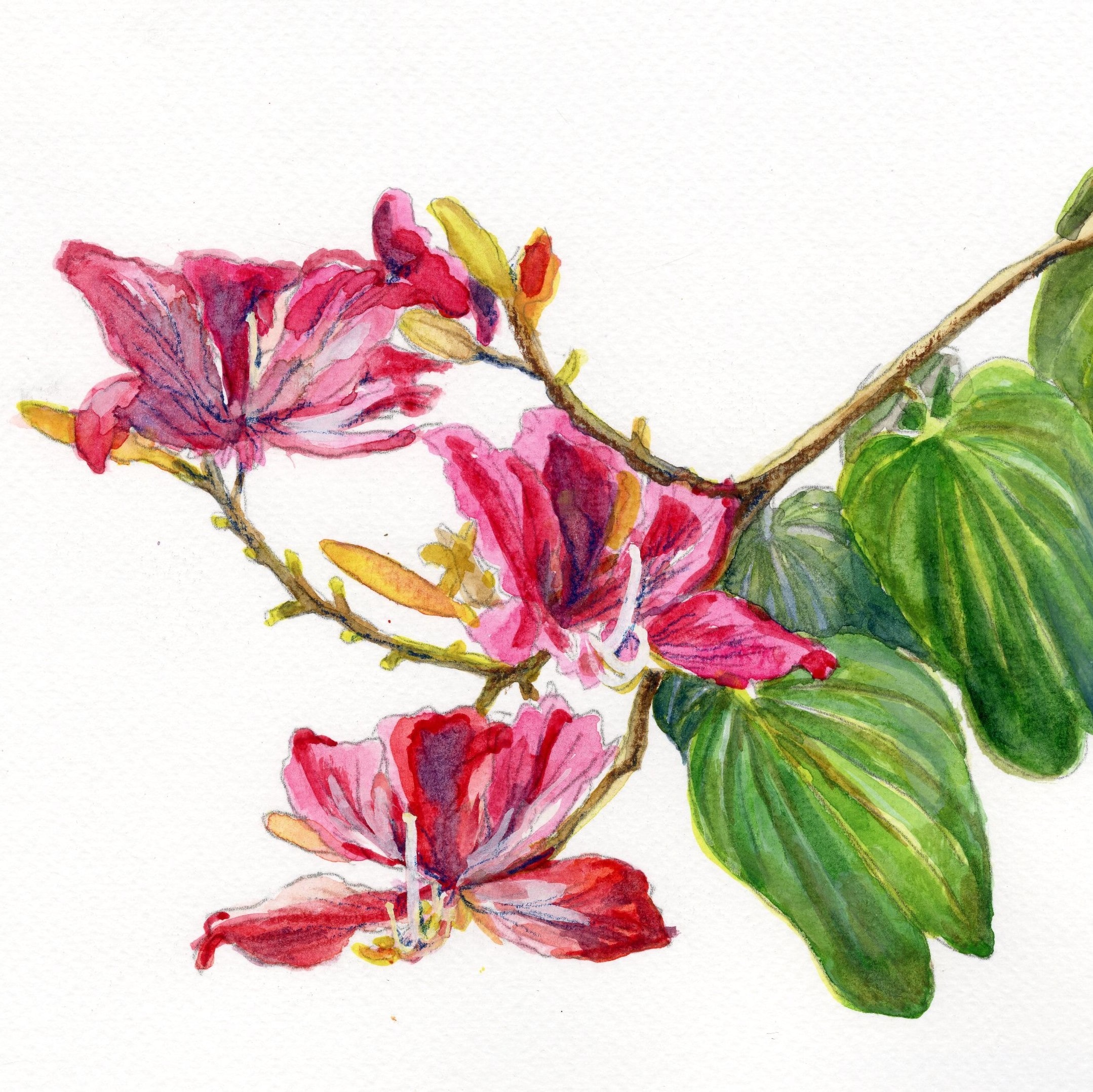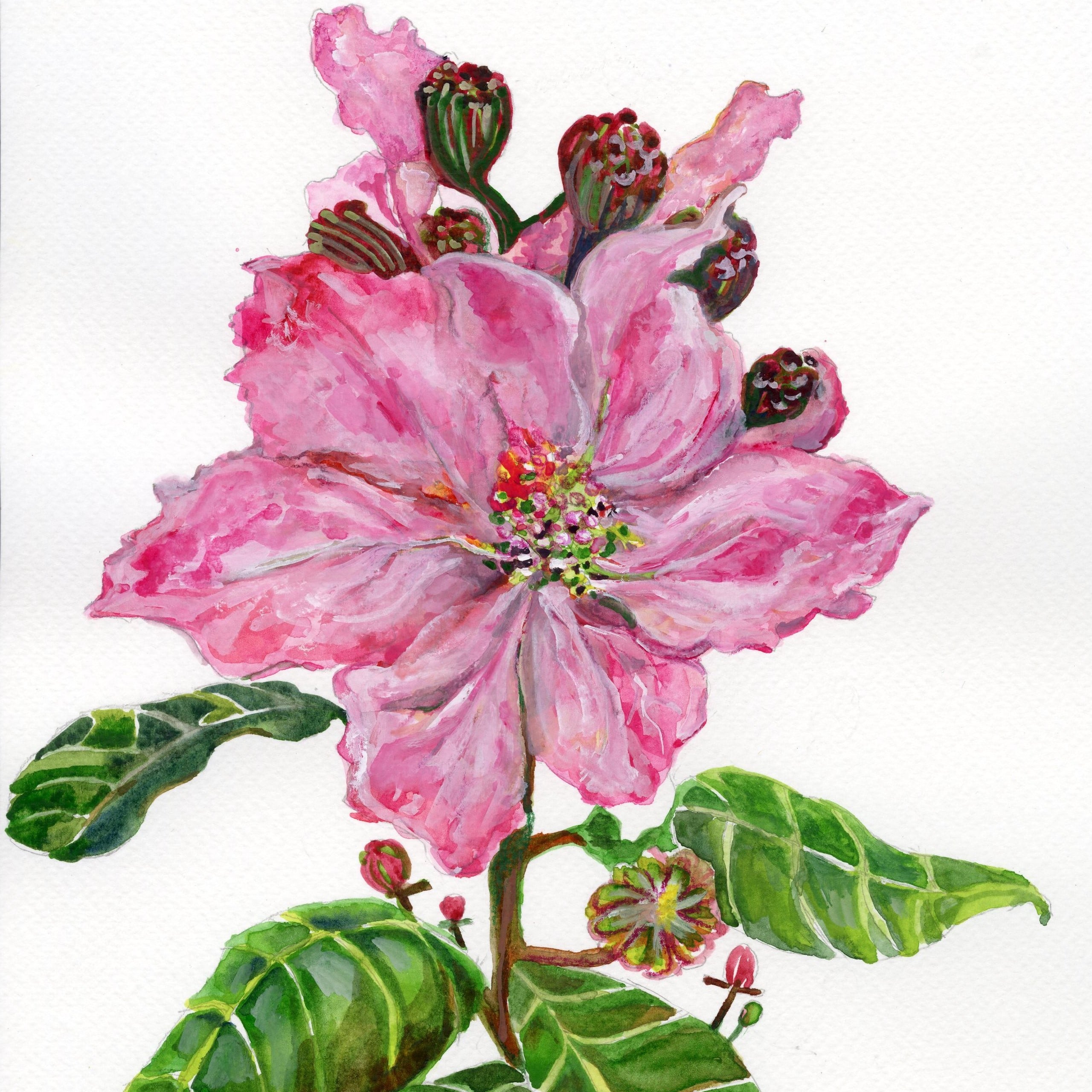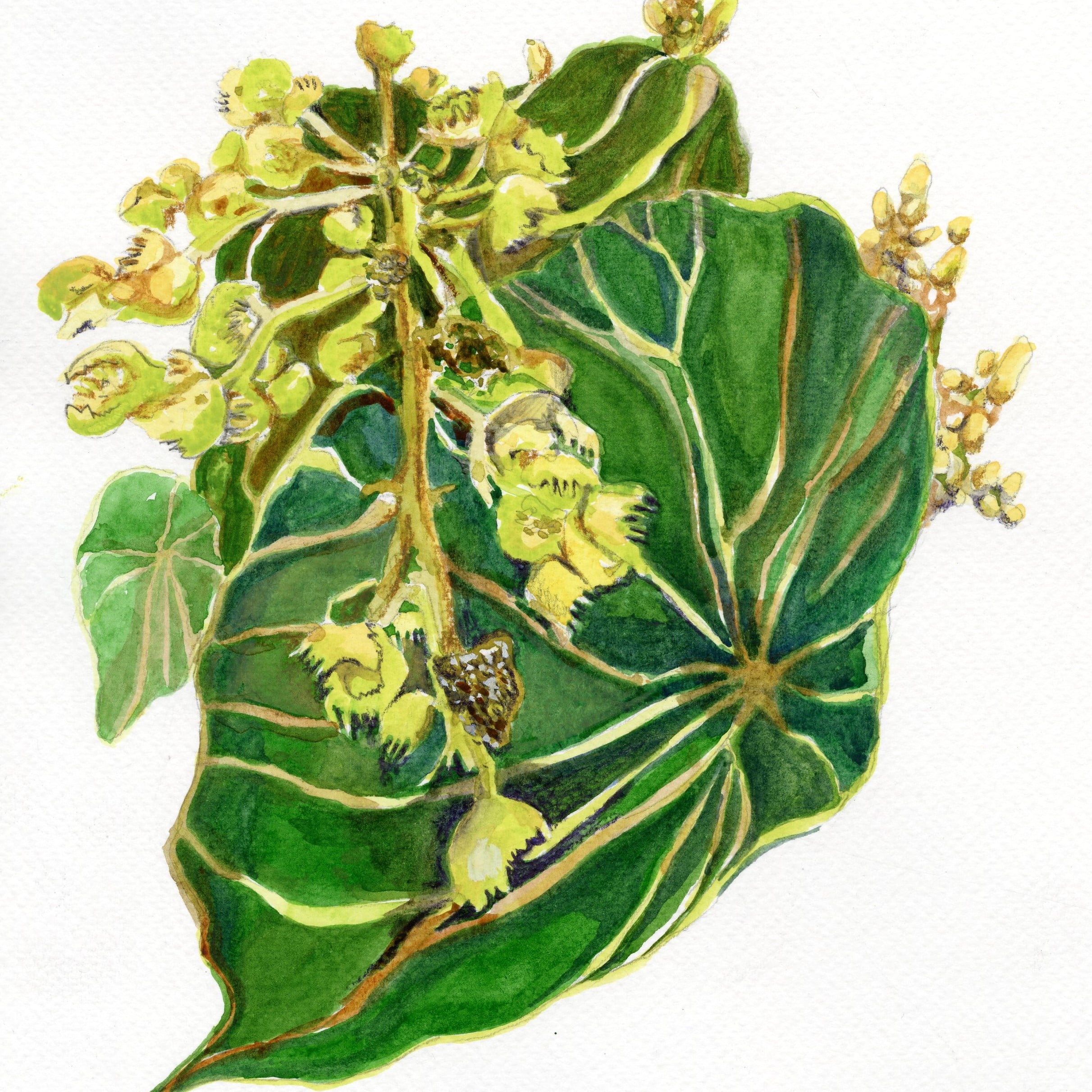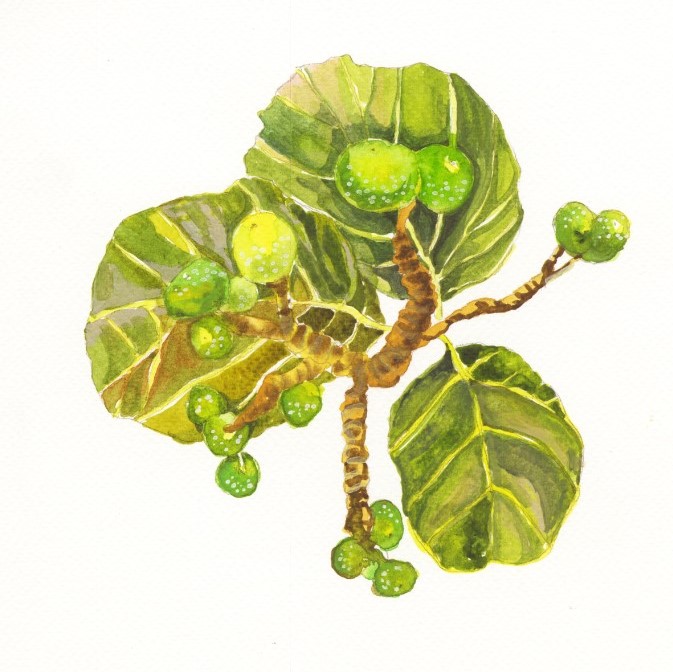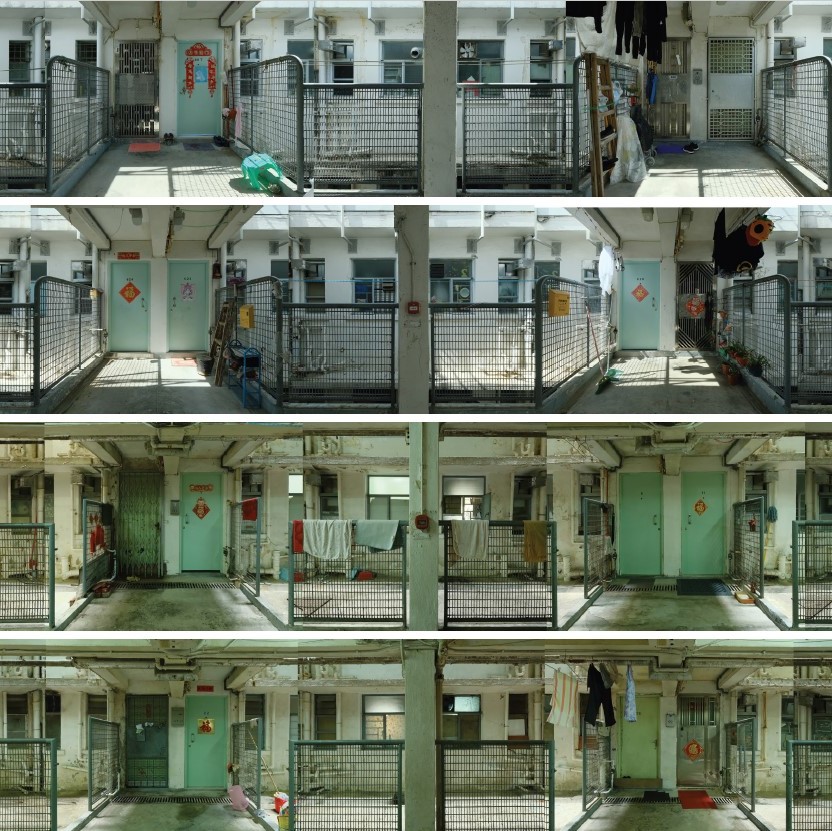Tree Survey Report
Through site visits and close observation, researchers record tree species, amount of trees, and their characteristics. This section looks at Yue Kwong Chuen with an ecological lens.
The data is then translated into visual representation, namely charts and a map that locates where each tree is, with species and tree ID specified. There is also a list regarding the abundance of each species.
In the proportionally-drawn chart, the black line along the y-axis indicates tree height (in metres). The outer circle in green is indicative of canopy spread (in metres), while the inner, opaque circle represents the diameter at breast height (in centimetres). Along the x-axis are the tree species and tree ID. Marked with “N” are native trees while those marked with “I” are introduced trees. Finally, locations of the trees are indicated on top of the charts for easy reference.
Nature and Human Ecology
Yue Kwong Chuen is adjacent to the Aberdeen Country Park. Green areas in the estate and its surrounding areas attract different kinds of animals. Urban birds such as Tree Sparrows and Spotted Doves are frequently seen in the estate. Since the estate is located near Aberdeen Typhoon Shelter, groups of Black Kites soaring in the sky are commonplace. Birds, such as Large-billed Crows that favour forest environments, can also be seen in the estate. Apart from trees, Yue Kwong Chuen is home to many flowering plants, which attract butterflies, bees and other insects. There are also gardens in the estate to provide residents with planting space and a green environment.
Survey Area
The survey mainly focuses on the Yue Kwong Chuen area, including Aberdeen Reservoir Road, Yue Kwong Road, and the stairs between Yue Kwong Road and Aberdeen Reservoir Road. Trees on the pavement and trees within the boundary of the estate were also included in the report. Investigators recorded trees with a diameter of breast height (DBH) equal to or larger than 95mm. The list of trees includes those at identifiable locations, as well as tree species easily identifiable and unrecorded. Since some of the trees are inaccessible, located on slopes or within fenced areas for example, investigators assessed the trunk width, canopy width and tree height by visual assessment and measurement tools. Therefore, the data is not fully accurate and serves as reference only.
Overview
Camel’s Foot Tree 9
Weeping Fig 9
Queen Crape Myrtle 6
Common Red-stem Fig 5
Common Macaranga 5
Frangipani 4
Opposite-leaved Fig 4
King Palm 4
India-rubber Tree 4
Big-leaved Fig 3
Carambola 2
Papaya 2
Orchid Tree 2
Turn-in-the-wind 2
Indian Almond 1
Camphor Tree 1
Flame of the Forest 1
Sweet Gum 1
Yellow Pui 1
Bamboo Palm 1
Citrus 1
Loquat 1
White Jade Orchid Tree 1
Fragrant Dragon Tree 1
